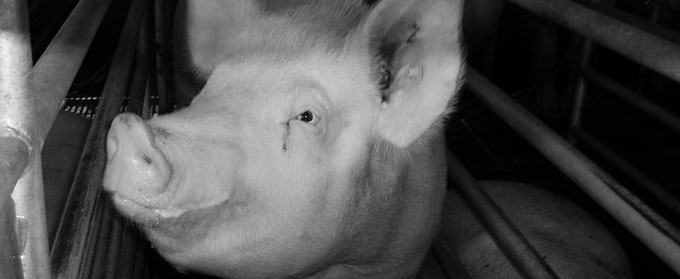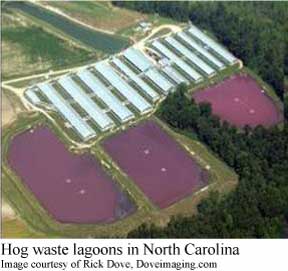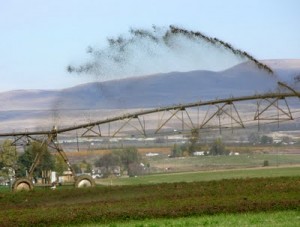Since the rise of factory farming in the 1960s, small family farms have been increasingly replaced with concentrated animal feed operations, which can produce meat and animal products with greater efficiency at a lower cost. In addition to impairing the livelihoods of livestock farmers, CAFOs pollute nearby land, exhaust the resources of nearby communities, and compromise the health of their residents.
Such is the case in North Carolina:
In the late 1980s, Smithfield slaughterhouses devised a vertically integrated approach to hog farming. Vertical integration allowed Smithfield to control every aspect of pork production, from crops to transport, slaughter and packaging. Basically, Smithfield would use the waste produced by their pigs to fertilize the crops that fed them. Although this approach sounds close to the traditional method of rotational farming, the amount of waste produced by pigs exceeded the amount of fertilizer their crop fields could absorb. Excessive waste was, and continues to be, stored in hog lagoons. It is estimated that Smithfield produces a total waste discharge of 26 million tons per year.
Hog Lagoons
Intensively-farmed pigs often live on slatted floors to allow waste to fall into a cellar below, which is periodically flushed out into these lagoons, pictured on the left. While law requires these lagoons to be lined with polyethylene to prevent leakage into the soil, it can be punctured by rocks in the ground.
Unnatural living conditions can take a toll on a pig’s health, making them susceptible to infection. The insecticides, antibiotics and vaccines that keep pigs alive until slaughter are present in their waste, which ends up in the lagoons that provide fertilizer for nearby land. Bacteria turns the lagoons pink.
Community Health
For those who live near a corporate hog farm, breathing contaminated air is inevitable. Ammonia, methane, carbon dioxide, hydrogen sulfide, and bacteria emanate from the lagoons and enter the atmosphere or nearby communities. Neighbors of these farms suffer from a variety of ailments, including: bronchitis, diarrhea, nosebleeds, headaches, asthma, mood disturbances, heart palpitations, and eye and throat irritation. A report by the Environmental Defense Fund states that “subjects in a controlled exposure chamber who were exposed to air from hog operations for one hour reported headaches, eye irritation and nausea.” The odor of rotting hog carcasses is reportedly “a nuisance and an emotional stressor on neighbors” (Environmental Defense Fund).


